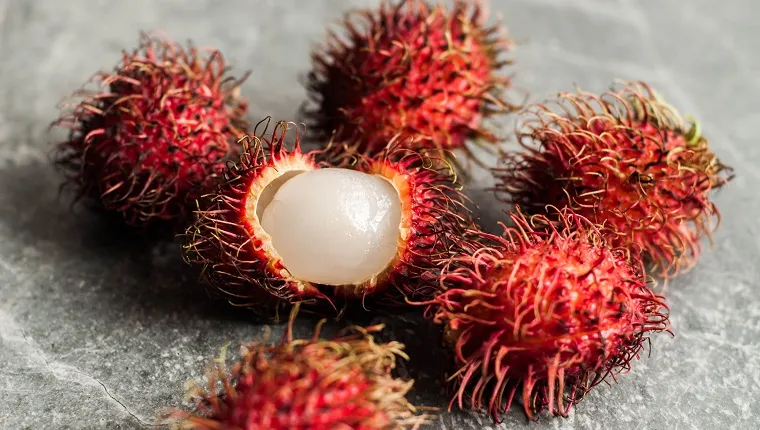Can dogs eat rambutan? This Asian fruit hasn’t gained a ton of traction in the US but is quickly becoming popular with foodies and adventurous eaters. Maybe you’ve tried one recently and are wondering if you can share it with your dog. But is this fruit safe for dogs?
The short answer is yes, the rambutan is safe for dogs with diligent preparation. While the fruit bears similarities to the lychee, which we do not recommend, it doesn’t have the same sordid history. Plus, the fleshy part of the fruit is more substantial, with greater nutritional benefit.
Here is what you should know about how the rambutan could be a potentially decent treat for your dog, but as always, you must have a discussion with your veterinarian before introducing it.
How Is Rambutan Good For Dogs?
From the look of it, you might not imagine that it could be a tasty fruit. The exterior of the rambutan is rough, with a mess of whispy spines coming out of it. But it is quite tasty — sweet, but also sour, with some floral notes.
When it comes to dogs, this is actually a downside. Dogs don’t always love the combination of sweet and sour, or floral. But if they do enjoy it, the fruit offers substantial fiber benefits, as well as vitamin C, phosphorus, and antioxidants.
Dietary fiber is wonderful for dogs in moderation. It aids their digestive system significantly. In large doses, however, it can help a little too much and can cause stomach upset. Gut health is extremely important, however, and adding fiber to your dog’s diet is important.
Without cholesterol, fats, or sodium, the rambutan gives energy-feeding carbohydrates, loads of protein, and significant amounts of fiber. This makes it an attractive option for healthy fiber.
How Can I Safely Give Rambutan To My Dog?

With rambutan, you have to do your due diligence in preparing the fruit properly for your dog to consume. Under no circumstance should they be allowed to have their way with an unprepared rambutan.
First and foremost, the rambutan needs to be ripe. When unripe, it will be green with green spines; when ripe, it can be red, orange, or yellow with black spines. Once the spines are black, the fruit will stay worthy of eating for a few days.
Second, the outside shell and spines, as well as the seed in the center flesh inside, must be removed. This skin is rough and can cause intestinal blockage, as can the large seed. But the real health concern with the seed is the trace amounts of cyanide it contains.
Cyanide is very toxic for dogs and is a concern with most seeded fruits, same as apples, pears, and many others.
If you want to try out rambutan with your dog, remove all of these dangers, and offer just a bit of the fleshy fruit. Then, give it a couple of hours to ensure no allergic reactions occur. If you’re in the clear, keep this high-sugar fruit to being an occasional treat.









